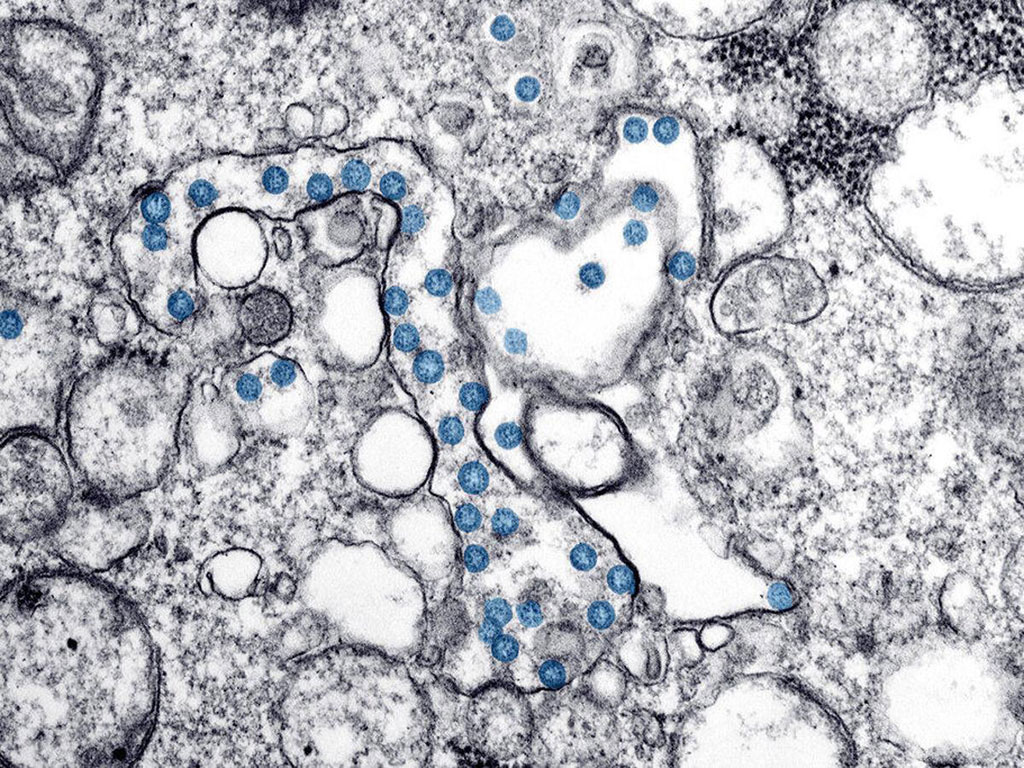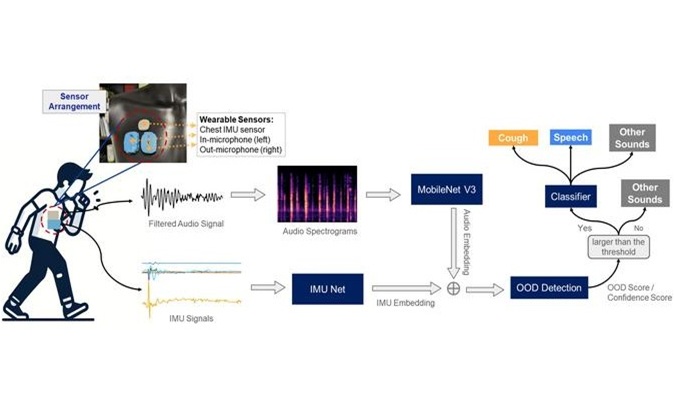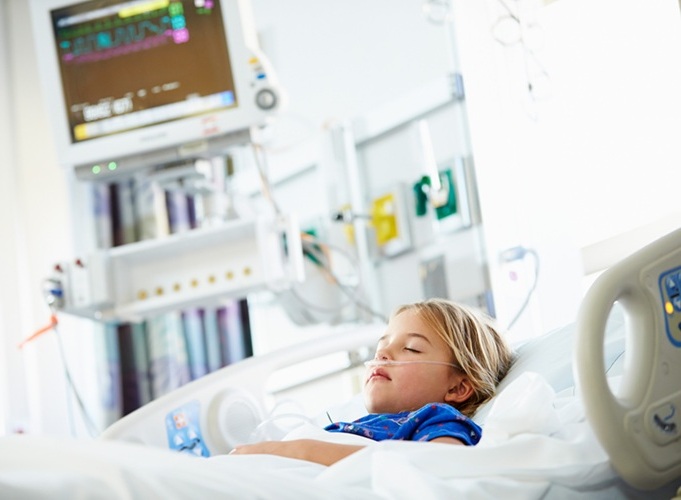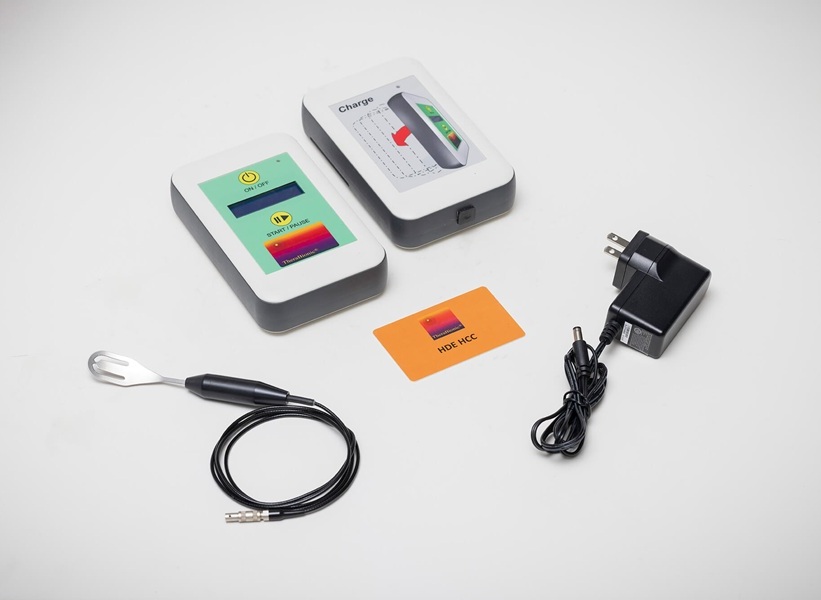Discovery of Helpful and Harmful COVID-19-Related Genes to Aid Development of New Therapies
|
By HospiMedica International staff writers Posted on 28 Oct 2020 |

Image: SARS-CoV-2 viral particles (blue) in a clinical isolate. (Photo courtesy of CDC)
Additional COVID-19 related genes - both helpful and harmful - revealed in a massive screen will help guide efforts to develop new therapies.
Researchers at Yale University (New Haven, CT, USA) and the Broad Institute of MIT and Harvard (Cambridge, MA, USA) screened hundred of millions of cells exposed to the SARS-CoV-2 and MERS viruses, and have identified dozens of genes that enable the viruses to replicate in cells, as well as those that seem to slam the door on the virus. The pro-viral and anti-viral roles of these genes will help guide scientists in development of new therapies to combat COVID-19, according to the researchers.
Scientists have identified how SARS-CoV-2 attaches to and invades cells, but less is known about why some cells are more susceptible to infection. Understanding the genetics behind host cells’ susceptibility to infection may help explain why some people exposed to the virus experience few or no symptoms while others become extremely ill or die. Researchers performed a genome-wide screen of a line of green monkey cells, which are more sensitive to SARS-CoV-2 infection than commonly used human cell lines. The screens for the first time allowed researchers to simultaneously track interactions of virus and cells. The screens confirmed earlier findings that the ACE2 gene, which encodes a receptor on the cell surface, promotes infection by SARS-CoV-2.
However, the screens also identified two previously unknown pro-viral factors, as well as a third that seems to assist in preventing infection. They found that members of the SWI/SNF protein complex, which turns genes on and off, and HMGB1, which has a myriad of functions including regulation of inflammation, were linked to increased cell death after infection. The researchers then introduced small molecule drugs that inhibit function of two of the identified gene products, and found they could increase survival of cells after infection in a dish. By contrast, the histone H3 complex, which helps regulate expression of genes within the cell nucleus, seemed to provide a protective effect, inhibiting the ability of SARS-CoV-2 to infect and kill cells.
“It is very important to understand wide variation of responses to COVID-19, for instance why advanced age makes it much more likely that people will die,” said Yale’s Craig Wilen, assistant professor in laboratory medicine and immunobiology. “We have identified both proviral and antiviral genes that may help us predict who is likely to get severely ill and what kind of drugs would be helpful or detrimental in treating patients.”
Related Links:
Yale University
Broad Institute of MIT and Harvard
Researchers at Yale University (New Haven, CT, USA) and the Broad Institute of MIT and Harvard (Cambridge, MA, USA) screened hundred of millions of cells exposed to the SARS-CoV-2 and MERS viruses, and have identified dozens of genes that enable the viruses to replicate in cells, as well as those that seem to slam the door on the virus. The pro-viral and anti-viral roles of these genes will help guide scientists in development of new therapies to combat COVID-19, according to the researchers.
Scientists have identified how SARS-CoV-2 attaches to and invades cells, but less is known about why some cells are more susceptible to infection. Understanding the genetics behind host cells’ susceptibility to infection may help explain why some people exposed to the virus experience few or no symptoms while others become extremely ill or die. Researchers performed a genome-wide screen of a line of green monkey cells, which are more sensitive to SARS-CoV-2 infection than commonly used human cell lines. The screens for the first time allowed researchers to simultaneously track interactions of virus and cells. The screens confirmed earlier findings that the ACE2 gene, which encodes a receptor on the cell surface, promotes infection by SARS-CoV-2.
However, the screens also identified two previously unknown pro-viral factors, as well as a third that seems to assist in preventing infection. They found that members of the SWI/SNF protein complex, which turns genes on and off, and HMGB1, which has a myriad of functions including regulation of inflammation, were linked to increased cell death after infection. The researchers then introduced small molecule drugs that inhibit function of two of the identified gene products, and found they could increase survival of cells after infection in a dish. By contrast, the histone H3 complex, which helps regulate expression of genes within the cell nucleus, seemed to provide a protective effect, inhibiting the ability of SARS-CoV-2 to infect and kill cells.
“It is very important to understand wide variation of responses to COVID-19, for instance why advanced age makes it much more likely that people will die,” said Yale’s Craig Wilen, assistant professor in laboratory medicine and immunobiology. “We have identified both proviral and antiviral genes that may help us predict who is likely to get severely ill and what kind of drugs would be helpful or detrimental in treating patients.”
Related Links:
Yale University
Broad Institute of MIT and Harvard
Latest COVID-19 News
- Low-Cost System Detects SARS-CoV-2 Virus in Hospital Air Using High-Tech Bubbles
- World's First Inhalable COVID-19 Vaccine Approved in China
- COVID-19 Vaccine Patch Fights SARS-CoV-2 Variants Better than Needles
- Blood Viscosity Testing Can Predict Risk of Death in Hospitalized COVID-19 Patients
- ‘Covid Computer’ Uses AI to Detect COVID-19 from Chest CT Scans
- MRI Lung-Imaging Technique Shows Cause of Long-COVID Symptoms
- Chest CT Scans of COVID-19 Patients Could Help Distinguish Between SARS-CoV-2 Variants
- Specialized MRI Detects Lung Abnormalities in Non-Hospitalized Long COVID Patients
- AI Algorithm Identifies Hospitalized Patients at Highest Risk of Dying From COVID-19
- Sweat Sensor Detects Key Biomarkers That Provide Early Warning of COVID-19 and Flu
- Study Assesses Impact of COVID-19 on Ventilation/Perfusion Scintigraphy
- CT Imaging Study Finds Vaccination Reduces Risk of COVID-19 Associated Pulmonary Embolism
- Third Day in Hospital a ‘Tipping Point’ in Severity of COVID-19 Pneumonia
- Longer Interval Between COVID-19 Vaccines Generates Up to Nine Times as Many Antibodies
- AI Model for Monitoring COVID-19 Predicts Mortality Within First 30 Days of Admission
- AI Predicts COVID Prognosis at Near-Expert Level Based Off CT Scans
Channels
Critical Care
view channel
Origami Robots to Deliver Medicine Less Invasively and More Effectively
Delivering medicine to ulcers or other internal sites often requires invasive procedures that can disrupt surrounding tissues and lengthen recovery times. Traditional magnetic actuators used in soft robotics... Read more
Improved Cough-Detection Technology Aids Health Monitoring
Coughing serves as an important biomarker for tracking a variety of conditions and can help monitor the progress of respiratory diseases or predict when someone’s asthma is being exacerbated.... Read moreSurgical Techniques
view channel
Novel Glue Prevents Complications After Breast Cancer Surgery
Seroma and prolonged lymphorrhea are among the most common complications following axillary lymphadenectomy in breast cancer patients. These postoperative issues can delay recovery and postpone the start... Read more
Breakthrough Brain Implant Enables Safer and More Precise Drug Delivery
Delivering medication directly to specific regions of the brain has long been a major challenge in treating neurological disorders. Current implants and infusion systems typically reach only one or two... Read morePatient Care
view channel
Revolutionary Automatic IV-Line Flushing Device to Enhance Infusion Care
More than 80% of in-hospital patients receive intravenous (IV) therapy. Every dose of IV medicine delivered in a small volume (<250 mL) infusion bag should be followed by subsequent flushing to ensure... Read more
VR Training Tool Combats Contamination of Portable Medical Equipment
Healthcare-associated infections (HAIs) impact one in every 31 patients, cause nearly 100,000 deaths each year, and cost USD 28.4 billion in direct medical expenses. Notably, up to 75% of these infections... Read more
Portable Biosensor Platform to Reduce Hospital-Acquired Infections
Approximately 4 million patients in the European Union acquire healthcare-associated infections (HAIs) or nosocomial infections each year, with around 37,000 deaths directly resulting from these infections,... Read moreFirst-Of-Its-Kind Portable Germicidal Light Technology Disinfects High-Touch Clinical Surfaces in Seconds
Reducing healthcare-acquired infections (HAIs) remains a pressing issue within global healthcare systems. In the United States alone, 1.7 million patients contract HAIs annually, leading to approximately... Read moreHealth IT
view channel
Printable Molecule-Selective Nanoparticles Enable Mass Production of Wearable Biosensors
The future of medicine is likely to focus on the personalization of healthcare—understanding exactly what an individual requires and delivering the appropriate combination of nutrients, metabolites, and... Read moreBusiness
view channel
Philips and Masimo Partner to Advance Patient Monitoring Measurement Technologies
Royal Philips (Amsterdam, Netherlands) and Masimo (Irvine, California, USA) have renewed their multi-year strategic collaboration, combining Philips’ expertise in patient monitoring with Masimo’s noninvasive... Read more
B. Braun Acquires Digital Microsurgery Company True Digital Surgery
The high-end microsurgery market in neurosurgery, spine, and ENT is undergoing a significant transformation. Traditional analog microscopes are giving way to digital exoscopes, which provide improved visualization,... Read more
CMEF 2025 to Promote Holistic and High-Quality Development of Medical and Health Industry
The 92nd China International Medical Equipment Fair (CMEF 2025) Autumn Exhibition is scheduled to be held from September 26 to 29 at the China Import and Export Fair Complex (Canton Fair Complex) in Guangzhou.... Read more

















